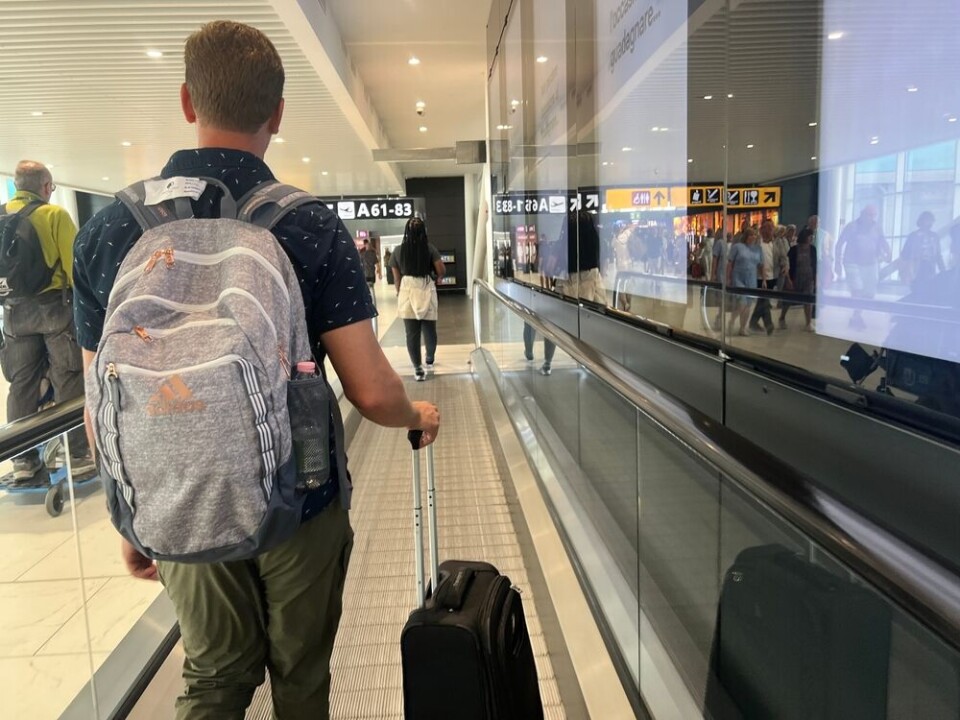Medicine, food, liquids: what you can take on flights from France
The ‘100ml’ liquid rules are back
What can you (or not) take in your hand luggage on flights from France?
Alexandra Adele/Shutterstock
New rules on carrying liquids in hand luggage on flights departing from France have now come into force. We look at what you can (and cannot) pack in your cabin bags.
How much luggage?
The exact rules depend on your airline, and they are permitted to state what they will and will not allow. You are advised to double check with your airline and ticket type specifically before boarding.
However, the rules for flights departing from Paris airports typically state:
Economy class: One piece of cabin baggage, weighing 8 kg or less, and one additional small bag (such as a handbag or rucksack).
Business and first class: Two pieces of cabin baggage and one additional small bag.
The maximum size of cabin baggage is generally limited to bags that can easily fit under the seat in front of you, or can be lifted into overhead lockers.
For example, on Air France flights, your cabin baggage can usually measure up to 55 x 35 x 25 cm maximum, including pockets, wheels and handles.
Some airlines, such as EasyJet, only allow overhead locker cabin bags for people who have booked a certain type of ticket (E.g. ‘Speedy boarding’). Other passengers are only allowed one small bag that must fit under the seat in front.
Read also: Train travellers in France to face fine soon if luggage above these dimensions
Read also: Tip to limit luggage theft on French trains (and SNCF approves)
What objects are allowed?
Most airlines have a list of items that are prohibited from cabin luggage. These include:
Sharp instruments (knives, scissors, etc.) and tools (drills, saws, hammers, etc.)
Blunt objects that could cause injury (baseball bats, skateboards, etc.).
The French civil aviation authority the DGAC also lists:
The DGAC also provides a tool here, which shows that you can and cannot take with you, divided into categories including medical, food, everyday life, tobacco, camping and sport, and other more obviously-banned items such as weapons, and fireworks. Air France also has a tool for its flights, here.
What are the most recent rules on liquids?
Despite recent attempts to change them (across Europe and in the UK), the rules once again state ‘no more than 100ml’ for individual liquids, of which the total must fit in a single transparent, resealable plastic bag with a maximum capacity of 1 litre (approximately 20 x 20 cm).
Read also: Change to cabin luggage rules in French airports from September 1
This includes any and all liquids and toiletries, such as perfume, lotion, deodorant, creams, and all drinks.
Only one of these bags is permitted per passenger, even if you have more than one cabin bag overall. The bags must usually be shown separately at security.
New types of 3D scanners - which were supposed to detect explosives in bags even if liquids were not taken out separately - had started being rolled out in some countries and airports. However the technology has stalled after some EU Member States cast doubt on their effectiveness.
The ‘100ml’ rule - which was first introduced in the early 2000s - is now back as a result.
Exceptions exist for certain liquids, such as essential medicines or baby formula. These must be justified by a supporting document, such as a doctor’s prescription, or proof that the baby is yours.
What about food?
The DGAC states that any food or substance that is similar to a liquid or gel at room temperature is included in the 100ml rule.
These products must weigh less than 100g, or come in containers of less than 100ml, and are included in the small resealable bag rule (see above).
The packaging of a food item can also see security officers to refuse it, even if it is not covered by the 100ml rule. This can include items in vacuum-packed containers, tins, and jars.
Examples of problematic products include jam, mousse, cream, butter, sauce, compote, pâté, rillettes, and soft cheese.
Some destinations also have restrictions on the food and plant items you are allowed to bring into the country, to prevent the spread of invasive species and parasites. You are advised to check before you travel, or risk having items confiscated at security or before entering your final destination country.




























